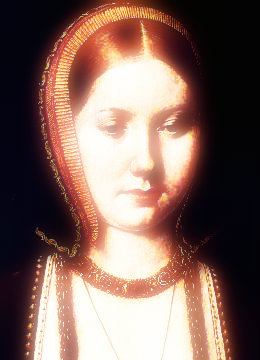
Looking for a good historical fiction to read that is true to Elizabeth of York and the tumultuous era she lived in? Look no further, the Plantagenet Princess is all this and more!
It is very hard to find a good historical fiction that is appreciate of Elizabeth of York, without downplaying on her strengths or ignoring her weaknesses.
Many novelists think it’s better to alter their female subjects, the ones who aren’t deemed “interesting” or “strong” in order to sell more books, by marketing them as progressive or ahead of their times.
This wouldn’t be a problem if novelists were honest with their audience but as it happens, they are not. So you can imagine my sigh of relief when I read this book and found an author who honored Elizabeth by staying as true as possible to her silent -yet strong- demeanor.
There is strength in silence and that is something that Samantha Wilcoxson emphasized on every chapter where Elizabeth comes out as an observant, proud, and pragmatic young woman who is aware of her importance, and is determined to be treated with the respect she rightly deserves.
As the firstborn of Elizabeth Woodville and Edwar IV, Elizabeth was well aware of her value. To quote from Susan Higginbotham in her biography on Elizabeth’s maternal family: “It is a truth universally acknowledged, that an unattached young king must be in search of a wife.”
And a man like Henry who’s claim to the throne was more tenuous than Elizabeth’s father, he needed a good marriage to keep himself in power.
Elizabeth is a caring young woman who is witty and at times outspoken, someone who has learned from her relatives’ mistake, has had to endure loss, but never feels sorry about herself. Her strength lies in knowing who to trust, her religious devotion and faith in herself. Sounds trite, but this is as close as you will get to time travel and meeting the real Elizabeth in historical fiction. The book is beautifully written, highly descriptive and character driven, with Elizabeth being not the only character that shines from this tale, but those are there with her at the end of her journey.
If you are a history buff who’s read plenty on the wars of the roses, and is fascinated by Elizabeth of York’s story, this is the book for you. If you are new to this era but wish to know more about the story behind the White Princess, this is the book for you too. Well researched, masterfully written, highly descriptive, Plantagenet Princess: Tudor Queen brings back the wars of the roses and the early Tudor era back to life, and gives justice to a figure who’s been easily discredited, altered, and her queenship dismissed.
They say that the good you do won’t do you any good. Sometimes this is true, but for a woman who had seen many kings deposed, murdered and killed in battle, and queens’ reputations dragged through the mud, sweetness and piety became her greatest strengths and her fertility a shield against anyone who’d think twice about her harming the new Tudor Dynasty.
Experiences shape us, and they certainly shaped Elizabeth but as I’ve previously pointed out, it is often our willingness to get back up despite how many times we’ve been brought down that makes all the difference. And Elizabeth never gave up. Although her weapons were invisible they were no less effective and as it happened, they guaranteed her success. She went down in history as one of the most successful English consorts, and gained a cult-like status.






